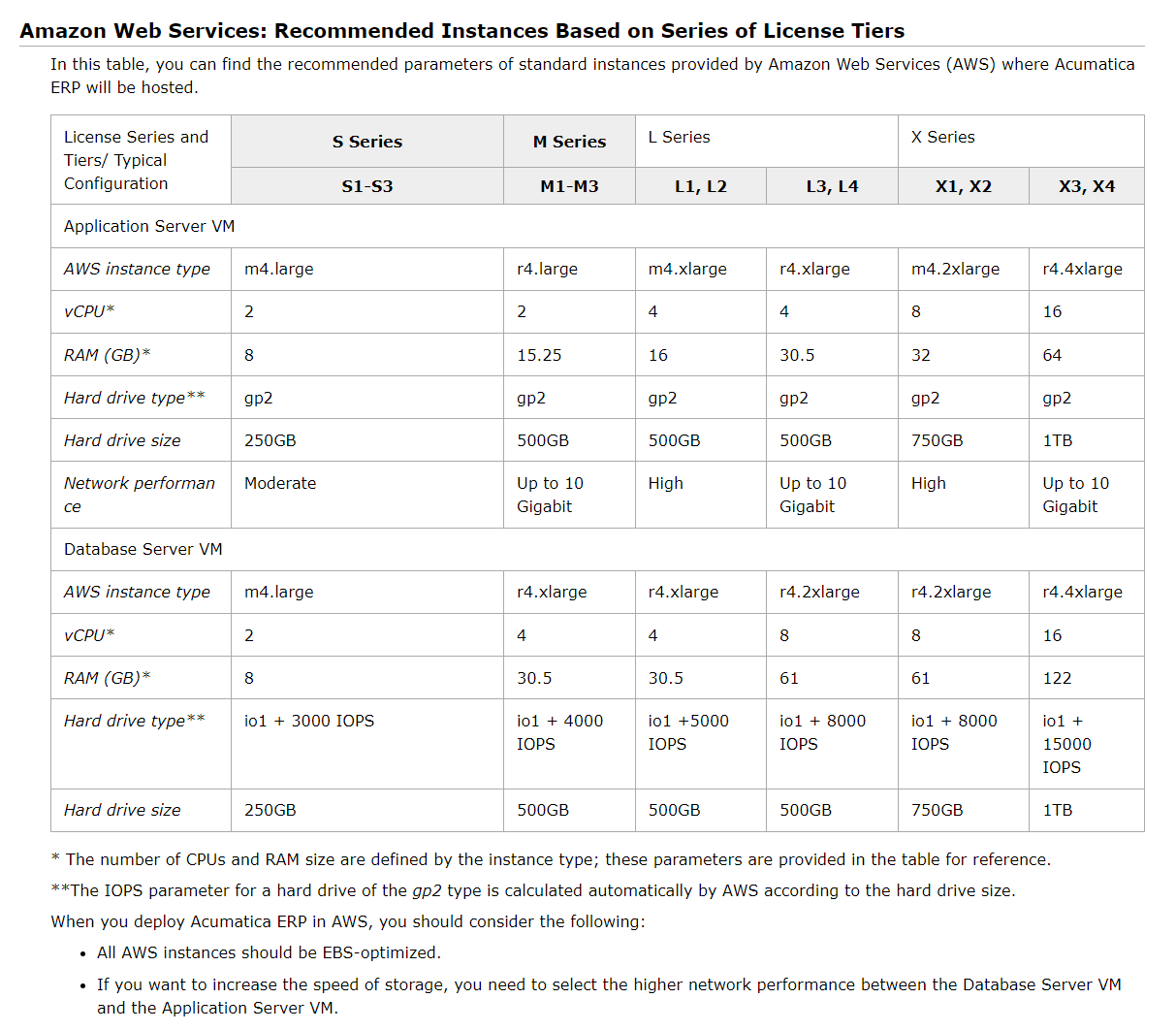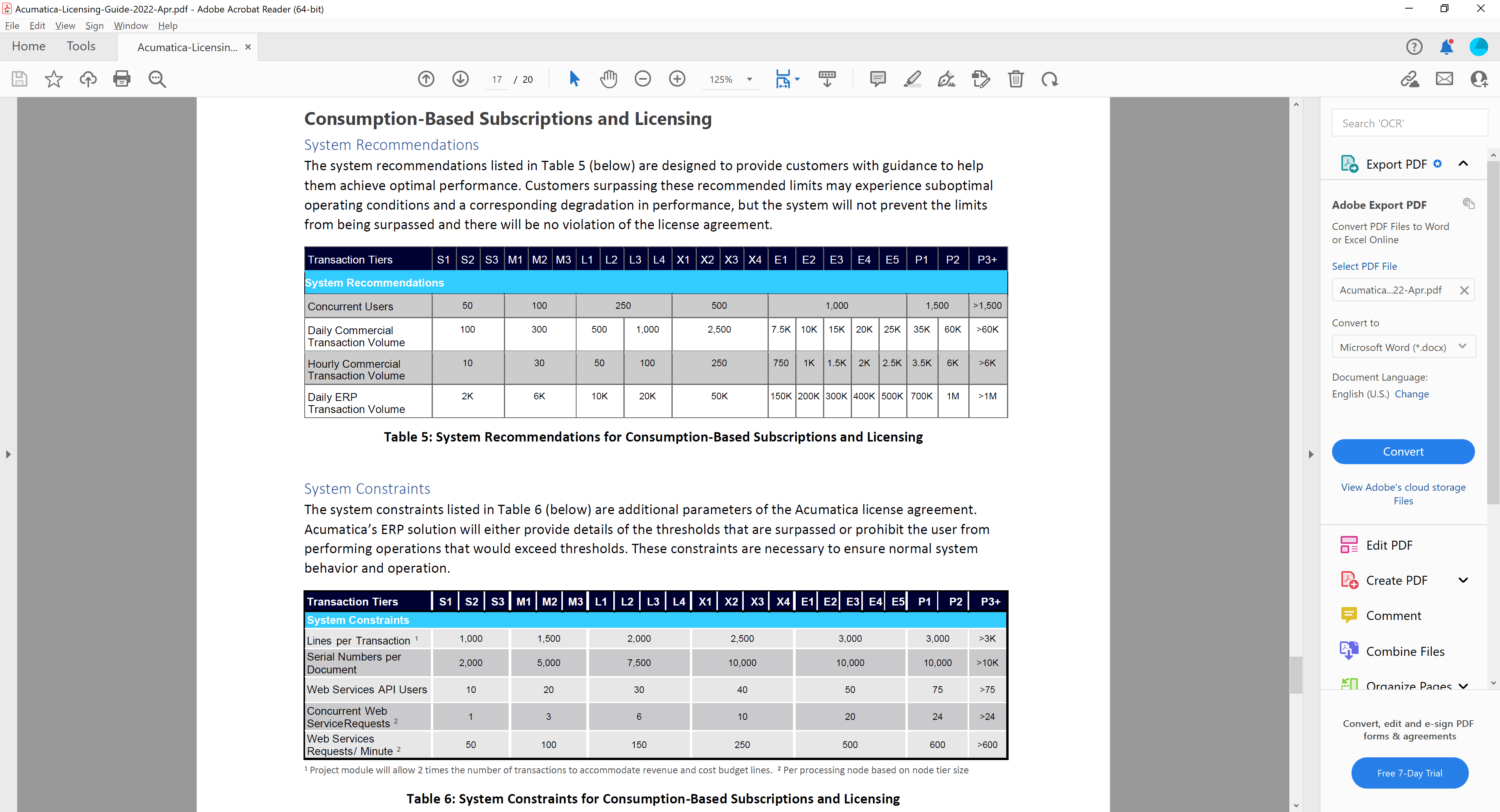Acumatica markets its software as being sold based on the number of transactions the customer performs. So in theory, it should not care about the hardware specs of an individual client server that is running Private Cloud, as long as they are operating within the limitations of their transaction count (Acumatica will care with regards to servers it hosts on clients’ behalf, because there is a cost impact to Acumatica of provisioning more performant/expensive servers).
However, if you look at the help documentation, you get statements like this with regards to Private Cloud subscriptions (https://help.acumatica.com/Help?ScreenId=ShowWiki&pageid=54ef574c-0adf-48a0-b5be-d3438a6e5400):
When your organization purchases a Private Cloud Subscription (PCS) or Private Cloud Perpetual (PCP) license for Acumatica ERP, your purchase manager selects a License Tier, which limits the parameters that influence system performance. The License Tiers are grouped into the following series:
- S Series: Includes the S1, S2, and S3 Tiers
- M Series: Includes the M1, M2, and M3 Tiers
- L Series: Includes the L1, L2, L3, and L4 Tiers
- X Series: Includes the X1, X2, X3, and X4 Tiers
- E Series: Includes the E1, E2, E3, E4, and E5 Tiers
This topic contains typical server configurations for PCS and PCP licenses that depend on the series of your License Tier, the software requirements for the server part of the system, and the system requirements for workstations.
The chart below shows the server specs by license tier:

Can we please get a definitive statement from Acumatica on whether or not server performance is being capped within the software by license tier?
We would like to be able to throw as much (or as little) server at our system when running Private Cloud, and don’t see any reason why Acumatica should care, based on the current stated licensing regime. But based on the bolded/underlined statement above, it seems like there may be performance limitations in the software by license tier. So please clarify this….even the VARs don’t seem to know the answer to this one.






